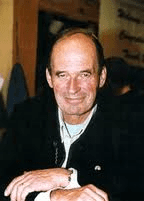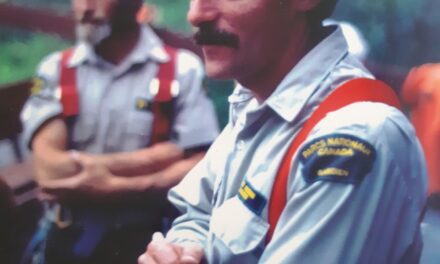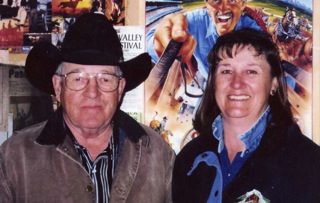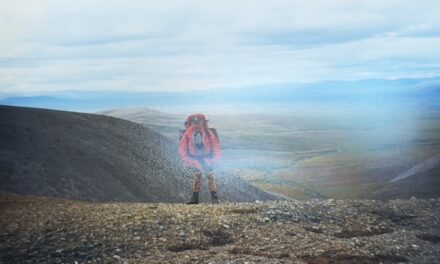Thank you to the Whyte Museum of the Canadian Rockies for granting permission to the Park Warden Service Alumni to post this interview on our website
Park Warden Alumni Society of Alberta
Oral History Project – Winter 2012
Interview with Dorothy Carleton
March 12, 2012. Banff Alberta
Interviewed by Christine Crilley-Everts
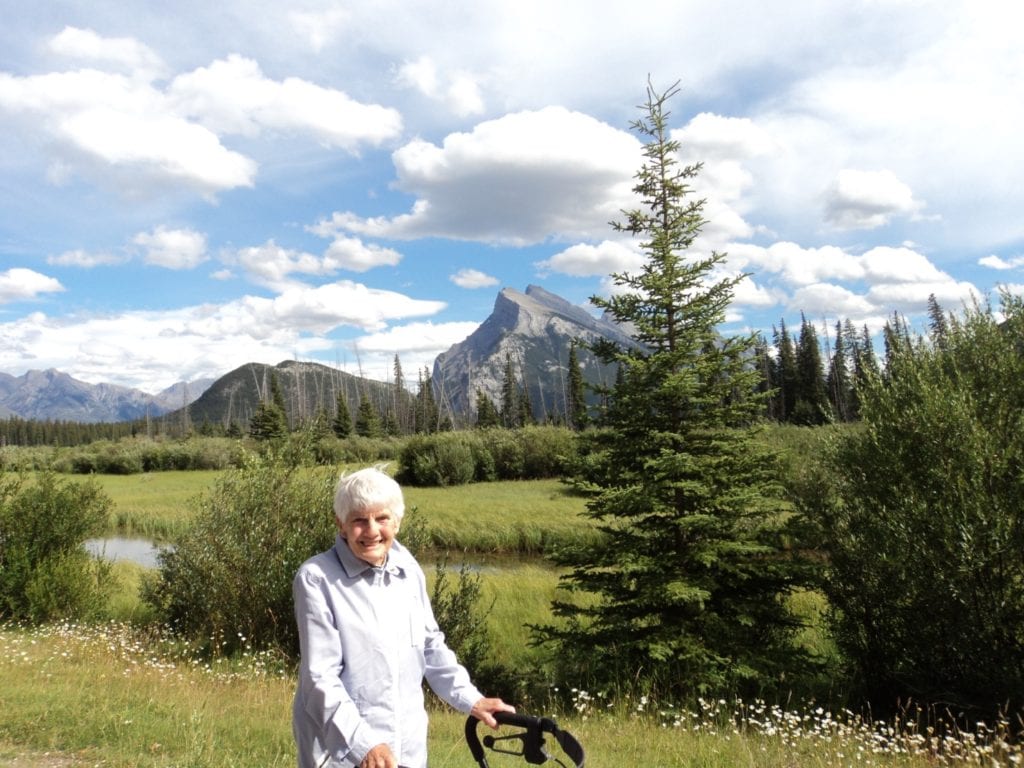
Place and Date of Birth: Dorothy was born in London, England. September 5, 1919
Occupations: Dorothy began working as a shorthand typist at age 14 with the English ship building company Thornycroft. She then worked for the English Forestry Association. During the war she served as a voluntary Air Raid Warden and met her soon to be husband, Calgary Highlander, Ed Carleton. In 1946, she came to Canada as a war bride with their young son Mike. Two years later, the family moved to Bow Summit, to join Ed, in his first warden district. The Carleton family then moved to the Stoney Creek district, a place that Dorothy remembers fondly. After living in the residence at the Banff Buffalo Paddock for one year, the family, which now included two more sons – Terry and Brian, moved to the Castle Mountain (Eisenhower district) where they stayed until 1962. They then moved to their present home on Rainbow Avenue in the town of Banff. After 31 years of service in Banff National Park, Ed and Dorothy retired in 1979.
In addition to daily household chores such as baking bread on a wood stove, hauling water from the nearby creek for daily use and weekly washing and taking care of her young boys, Dorothy helped Ed by answering the parks’ phone, filling out fishing licenses and keeping track of hikers. When they were stationed at Castle Mountain, Dorothy also operated the switchboard which served as a link between Banff and Kootenay national parks.
Additional Information: Dorothy continues to be very busy with her family, her children, grandchildren and great grandchildren, as well as, the local community. She is the director of the Banff Senior’s Choir and an active volunteer at St. Martha’s Place (long term care unit) in the hospital where she loves to sing and bring some sunshine to the residents. She is also a member of the I.O.D.E and the Banff Legion’s Ladies Auxiliary. The warden service and its camaraderie, especially amongst the warden’s wives remain an important part of Dorothy’s life. After celebrating her 90th birthday she thoroughly enjoyed the National Park Warden’s Centennial Celebrations.
(0:29) I was born in London actually (In response to the question, “Where you born in Reading England?”) But I was raised in Reading. I went to school in Reading. Everything happened in Reading after that! Yes! (In response to the question, “You were born in 1919?”)
(1:01) Oh definitely! In Reading during the war. (In response to the question, “Was it in Reading that you met Ed?”). We met at his brother’s wedding. He (Ed’s brother) married my very best friend Phyllis and Ed was the best man and I was the bridesmaid. And the rest is history! The two brothers came over to England to help fight the war. They were both in the Calgary Highlanders. And that is where we met in Reading, Berkshire, England. That’s where we both lived, Phyllis and myself.
(1:42) Yes, because I had married a Canadian soldier. (In response to the question, “Then you came to Canada as a war bride?”) The Canadian government was very good. They brought all the war brides over for free on various ships. My ship was called the Letitia. Yes, he was three and a half months old. (In response to the question, “And you had your young son Mike with you?”) He was in a carry cot. We left Liverpool in April of 1946. It was ten days on the ship on the ocean and then five days on the train. (In response to the question, “How long was the journey?”) Yes, in Didsbury. Ed met me in Didsbury. (In response to the question, “Did you come to Didsbury?”)
(2:51) In 1948, he started. (In response to the question, “Had Ed joined the warden service in 1946?”) For a year and a half we lived in Didsbury. Then he was successful in becoming a park warden. The idea of being a park warden appealed to him and he saw the advertisement actually in the Didsbury post office. He applied and in those days the veterans did get a preference, like right after the war, they helped the vets get a job and get established.
(3:38) No, he went to Lake Louise and got training with Beef Woodworth. (In response to the question, “Once he got the job, did he go straight to Bow Summit?”) You’ve probably heard that name. He was the chief warden at Lake Louise at that time. Ed came to Lake Louise ahead of me. I was still in Didsbury waiting for him to say, ‘I’m ready for you!” That’s right. (In response to the statement, “Then when he was ready, you and Mike came out on the train.”) Yes, we drove from there up to Bow Summit and that was quite the experience too, when we finally got to Bow Summit. I saw that little log cabin and I couldn’t believe it. I just couldn’t believe it! Ed was so proud that he’d got his first district and they had given him the keys to this big jeep. It was an army jeep actually, but they put a top on it so that you weren’t exposed to the elements. It would have been the spring. (In response to the question, “What time of year was it?”) It wasn’t very long, because it was not winterized that cabin. (In response to the question, “How long were you in Bow Summit?”)
(5:19) Of course it was! (In response to the question, “Was that a big adjustment coming from Reading, England to that little cabin?”) Yes, I couldn’t believe it! Ed was so happy. He came around to my side to get me out of the truck and he said, “This is home!” I can still see his face just beaming. “Well this is it.” “Wow! It looked like a storage shed to me.” I said, “Ed you’ve got to be kidding!” Even the inside was just as rustic as the outside. Yes, all the furniture, everything. (In response to the question, “Would it be quite similar to the Windy cabin at the Whyte Museum?”) It was very, very similar to the Windy cabin. (The beds were just made out of logs woven together with a fire hose). I had to get a crib out there (for their son Mike, who was two years old.) It was set up between the two bunk beds.
(7:01) You couldn’t see the cabin from the road. (In response to the question, ‘Was the cabin far off the road?”) It was kind of a little windy road right down to the cabin from the gravel highway, it was a gravel highway then just to the Ice Fields.
